The Goblet / Autumn / Winter / Edible
Scientific Name
Pseudoclitocybe Cyathiformis
Common Names
The Goblet
Family
Tricholomataceae
Habitat
They are saprobic and can be found on soil or on dead wood, logs and stumps in mixed woodlands. They can sometimes appear in pasture and meadows too.
Description
A fairly common, easy to recognise mushroom. They can sometimes be found right through the winter until early spring.
Identifying Features:
Cap:
They can be quite variable dependant on age and weather conditions. They tend to be dark grey/ brown in colour. They are strongly funnel shaped with an in rolled edge. Along the edge or margin there are striations but they can sometimes be quite faint.
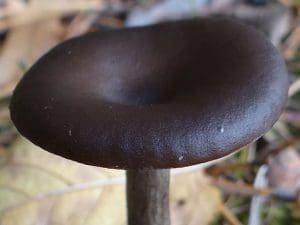
Stem:
Grey in colour, they are long in comparison to the cap. They are covered in silky brown fibres that run down the full length of the stem. They tend to get slightly thicker towards the base.
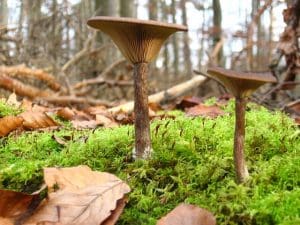
Gills:
The gills are white when young, darkening with age to a greyish/brown colour. They are adnate to slightly decurrent and are forked.
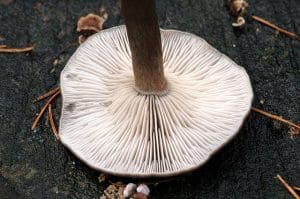
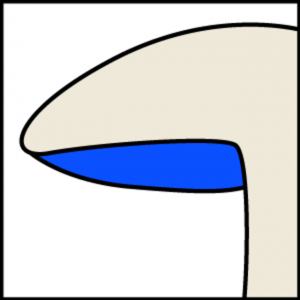
Smell:
Mushroomy but also slightly mealy.
Spores:
White to pale grey.
Uses
In food
They have a nice mild almost sweet flavour that works well it most dishes.
The stems can get tough with age so are often discarded.
They must be thoroughly cooked before consumption and even then they aren’t tolerated by everyone.
If it is your first time trying them you’re advised to thoroughly cook a small part and wait 24 hours to see whether there is any adverse reaction.
Harvesting
With their forked gills and long stems, they are one of the easiest to identify woodland mushrooms.
Known hazards
There are reports of people suffering adverse reactions to these mushrooms.
Potential lookalikes
With their adnate gills which are forked and their long fibrous stems they are unlikely to be confused with many other species. They can sometimes be confused with members of the Clitocybe family especially the Fools Funnel (Clitocybe Rivulosa) but this and all other funnels lack the forked gills.
Trooping funnel – has a distinct umbo in the centre of the cap and is much more pale cream in colour.
Extra Notes
The generic name Pseudoclitocybe, implies that the species in this group look very much like Clitocybe (funnel) mushrooms, Cyathiformis means in the form of a chalice (goblet).



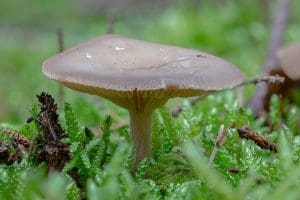



Leave a Reply
You must be logged in to post a comment.